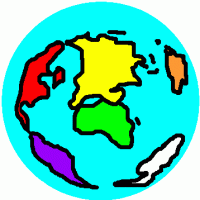Príspevky: 15
Jazyk: English
thyrolf (Zobraziť profil) 17. júla 2017 17:07:20
Ĝi estas blua, KION mi opinias esti stranga.
It is blue, which I think is strange
Ĝi estas blua, TION mi opinias esti stranga.
It is blue, that I think is strange. In the sense of:
It is blue. That i think is strange.
david_uk (Zobraziť profil) 18. júla 2017 9:41:35
"It is blue. That I think is strange." is poor English and is ambiguous.
Alternatives in English could be:
"It is blue: that, I think is strange".
"It is blue, I think that is strange."
"I think it is strange, that It is blue"
I think any of those would be better translations, but I am not good enough in Esperanto to be sure.
Do you think "Ĝi estas blua, KION mi opinias esti stranga." and "Ĝi estas blua, TION mi opinias esti stranga." have different meanings in Esperanto?
thyrolf (Zobraziť profil) 18. júla 2017 11:14:06
sergejm (Zobraziť profil) 18. júla 2017 11:29:33
KIO is first word in the (sub)sentence, as English WHICH.
TIO, as Engish THAT, is in common place in the sentence.
"Ĝi estas blua, mi opinias TION esti stranga."
Altebrilas (Zobraziť profil) 21. júla 2017 21:31:48
La fakto, ke ĝi estas blua, ŝajnas al mi stranga
Ĝi bluas.. Tio strangas al mi.
Ĝi estas blua? strange!
Esperanto ebligas traduki diversmaniere, se oni ne nepre volas fari tion laŭlitere.

